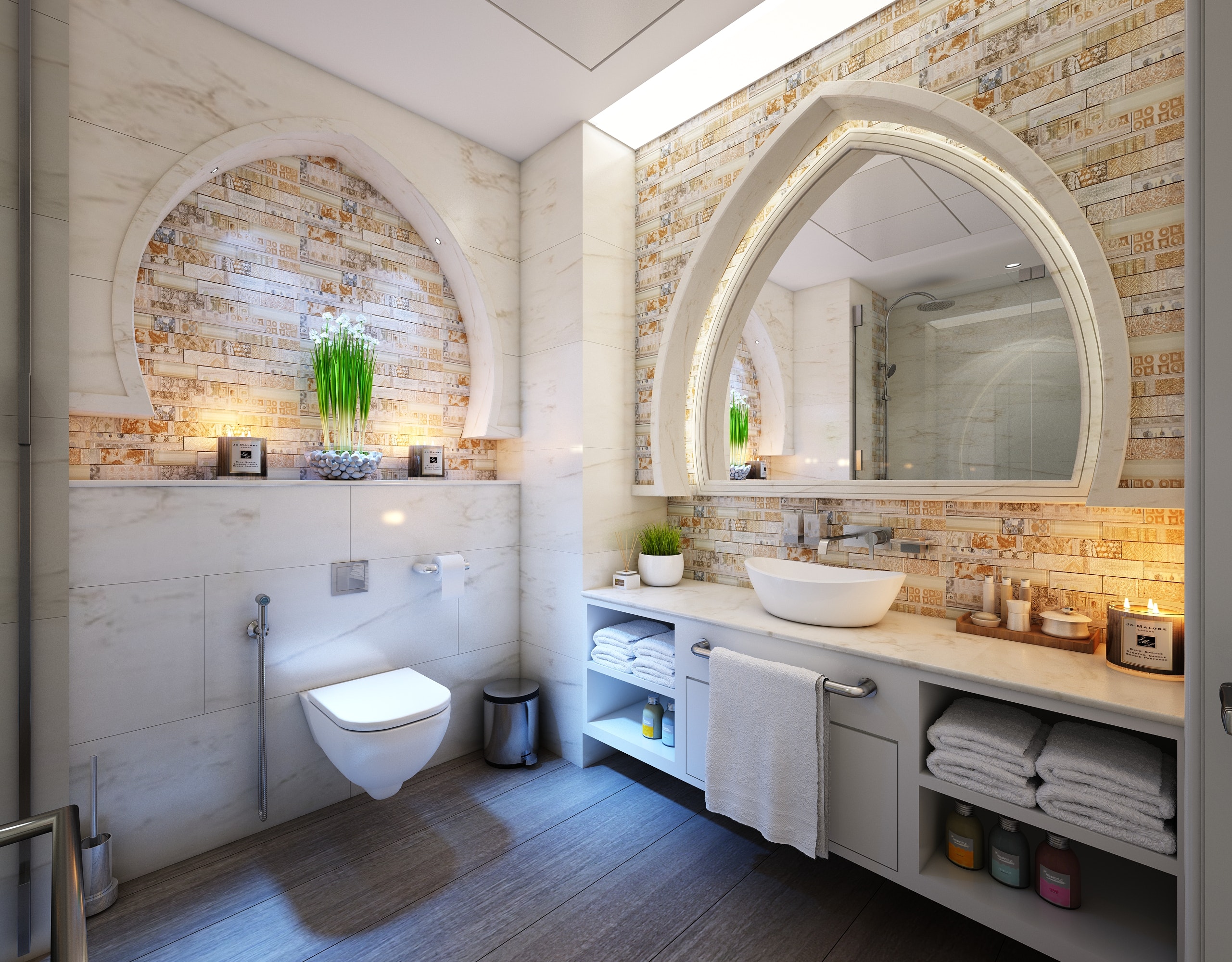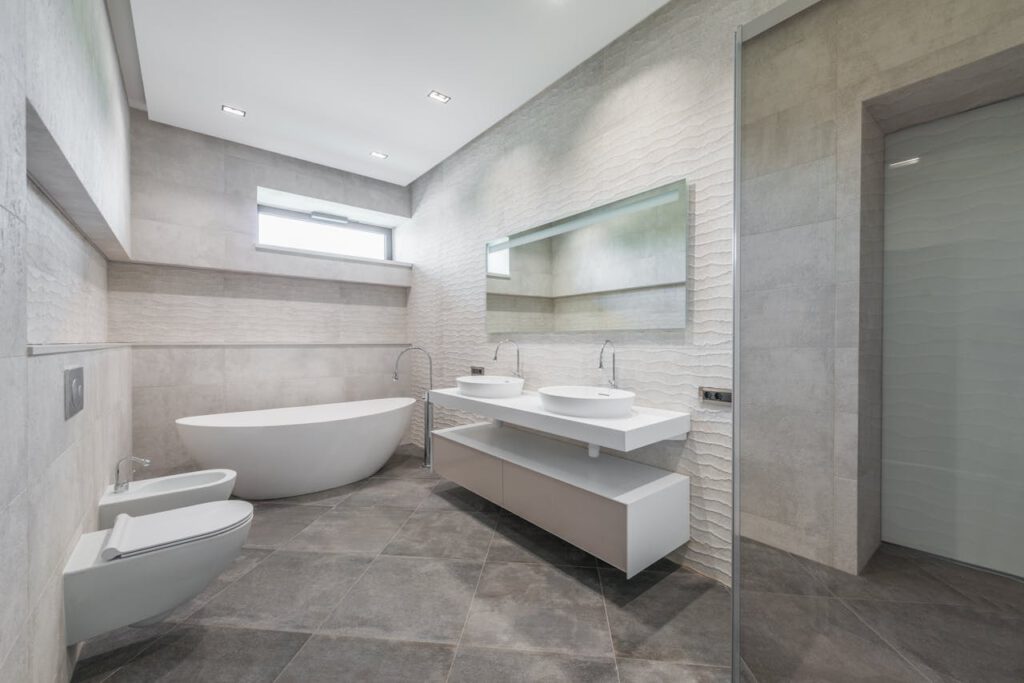Your bathroom floor sets the mood of your space, not only visually but also tangibly. More often than not, you’ll be walking barefoot in your bathroom, and if the surface feels too rough, slick, or textured, your bathroom will turn from a relaxing retreat into a baby-me space.
You’ll literally have to walk on eggshells when using your bathroom. For instance, if you wanted to paint your nails in the bathroom, you wouldn’t be able to do it. Why? Because the polish could stain your floor or countertop.
Wondering how to prevent that? Here are six tips for choosing bathroom flooring and countertops you’ll actually enjoy using.
1. Establish a Budget or Limit
Not again, you may be thinking. But really, your budget should be on top of your list when choosing bathroom flooring. Not only will it prevent you from looking at items above your pay grade, but it will also stop you from overspending.
You’ll also be able to search for the best offers within your price range once you know the number you’re comfortable spending.
2. Figure Out Your Preferences
Once you’ve determined your budget, it’s time to begin thinking about your bathroom flooring and countertop preferences. Ask yourself these questions:
Is your space large or small? – If your space is larger, you can choose any type of colors you want, but if it’s smaller, go for lighter or neutral colors.
Do you have a window that lets in natural light? – Natural light can change the color and look of your flooring and countertops. If you have access to natural light, you can go for darker tones.
How much work do you like to do? – This may seem like a weird question, but it’s essential to ask. Your work capacity determines the time you could devote to your bathroom. If you create a richly decorated bathroom with wooden countertops and patterned flooring, you’ll have to take a lot of care of both. If you can’t do that, don’t choose delicate materials.
What are you looking for? – Do you want to show your personality in your bathroom? Are you looking for longevity? Beauty? What? Your aim will determine your final choices and their durability, functionality, and style.
3. Consider All the Options
Now that you know what you want, look at all the flooring and countertop options available on the market. Let’s talk about a few of them to make your life easy.
Porcelain or Ceramic Tile – It needs little to no maintenance and comes in a huge range of finishes, designs, and colors. This tile is great for wet room floors, but it can get extremely slippery, increasing the chances of slipping hazards.
Vinyl Flooring – It comes in a variety of designs and colors and is warmer underfoot, but it isn’t suitable for places that get wet often, such as your children’s bathrooms.
Natural Stone – It is excellent but often requires sealing and can be marked by colored cosmetics because it’s porous. Stone is also very cold underfoot and expensive.
Engineered Wood – It is a great option if you’re a fan of wood but want more durability. Unfortunately, wood can contract and expand because of steam and water exposure, causing lots of longevity problems, such as rotting.
4. Think About Longevity
Your bathroom is one of the most frequently used spaces in your home, so it goes through quite a bit of wear and tear. So, it’s crucial to choose materials that are waterproof, have a lower weathering potential, and are easily cleanable.
This is where longevity comes in. Longevity is a synonym for permeability and weathering. Permeability determines how much water your floor and countertop absorb, and weathering describes how easily they erode.
For instance, natural stone is notorious for eroding quickly. It’s also highly permeable, absorbing colored cosmetics and water easily. So, if you’re fond of painting your nails in the bathroom, scratch out natural stone from your options.
5. Figure Out the Function of Your Surface
Function is the quality of your surface doing what it should. If you want your flooring to retain heat, double as a nail station, or withstand tons of water, you’ll need to select a surface that ticks all those boxes.
If you compromise on any of those factors, you may end up renovating your bathroom sooner than you think.
6. Don’t Leave Color to the Wind
When choosing the color of your flooring or countertops, don’t just go with one color because you like it. You need to consider the regularity of use, the size of the space (yes, it’s related to color), tile size, and grout color.
Traffic – If the bathroom you’re renovating is a high-traffic area, consider a patterned or lighter/neutral-colored floor or countertop because it’ll show less wear. If it’s rarely used, you can choose any flooring or countertop you like.
Space Size – Larger bathrooms can work better with darker tones on the floors and countertops. But smaller bathrooms can’t, so it’s better to stick to lighter materials throughout unless you prefer a moodier atmosphere.
Tile Size – Larger spaces can work with any type of tile size. But if your bathroom is small to medium-sized, you can still go for herringbone, chevron, or patterned tiles on the floor. Just try to use larger tile sizes or wider planks to make the space feel bigger.
Grout Color – Light-colored grout needs more cleaning sessions and maintenance to keep looking good. If you don’t like the idea of scrubbing the bathroom floor with a toothbrush once a month, choose darker grout colors.

